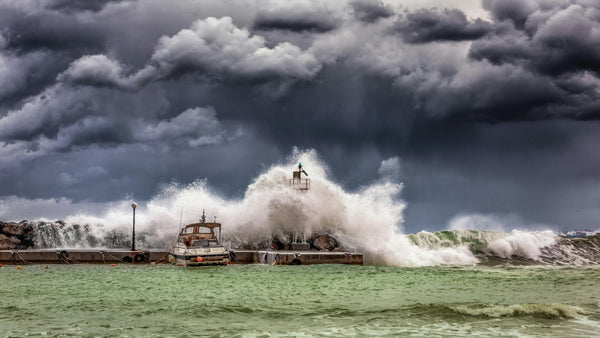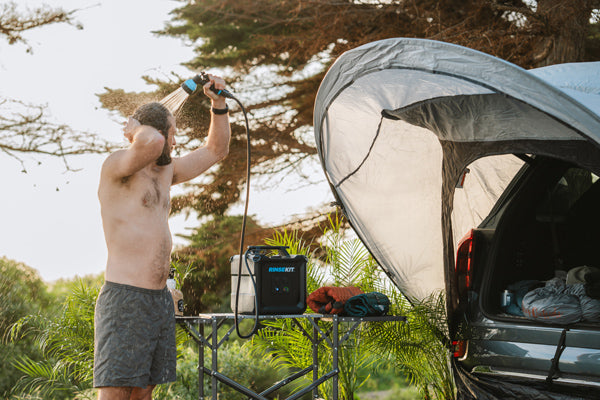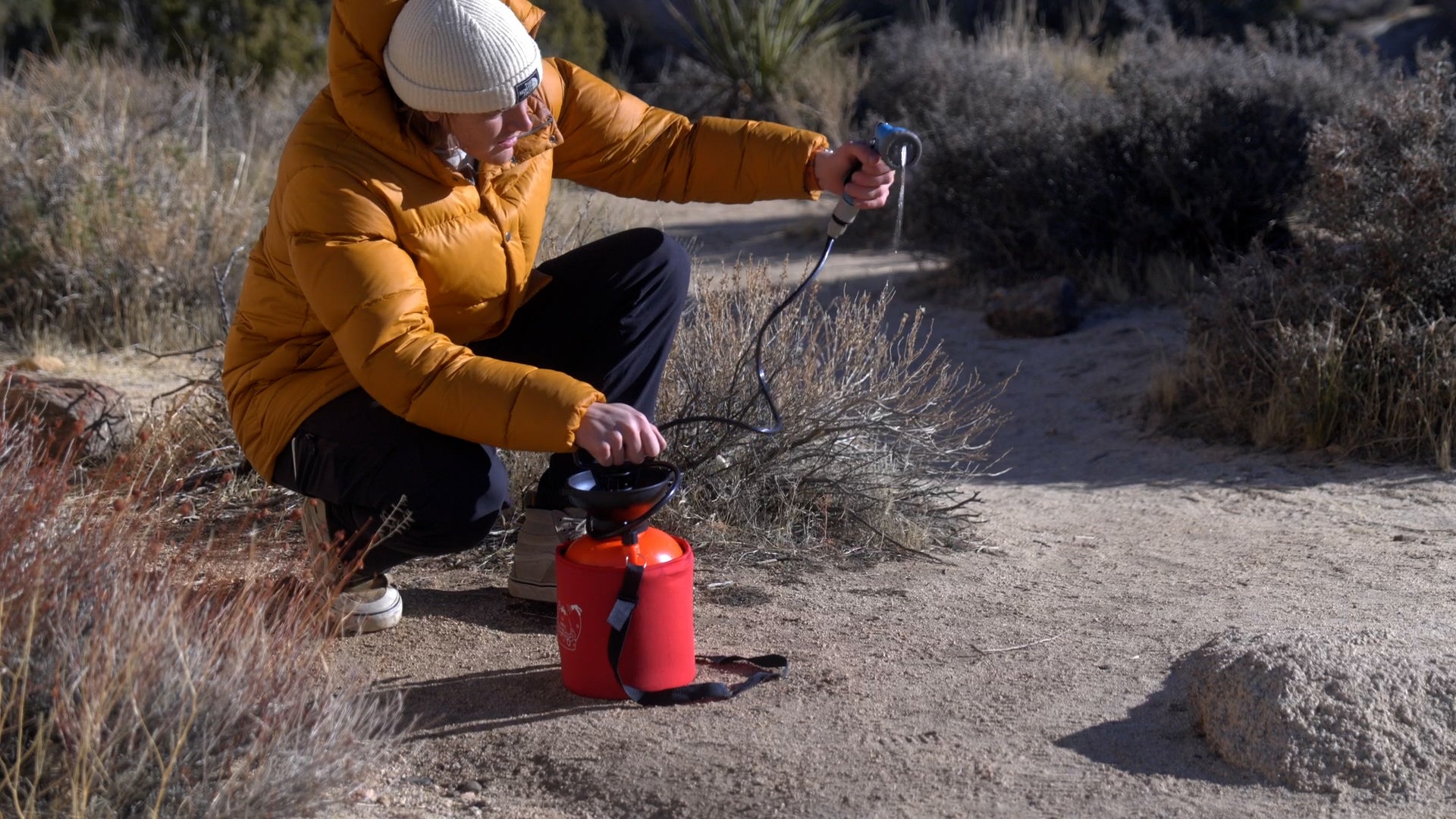
When a hurricane is heading toward your area, it is not just a matter of preparing for a day or two of rain and wind. It is about preparing for the possibility of extended power outages, limited access to clean water, closed roads, shuttered stores, overwhelmed emergency services, and living without the comforts of modern infrastructure for days or even weeks. This is why every household in a hurricane-prone region needs a complete and well-planned hurricane survival pack: a collection of carefully chosen supplies that will help you and your family stay safe, healthy, and as comfortable as possible during and after a major storm.
Too often, hurricane prep is reactive rather than proactive. People rush to stores as soon as a storm is named, trying to piece together supplies amid empty shelves and crowded aisles. But those last-minute efforts are stressful, unreliable, and often leave out important items. Building a hurricane survival pack in advance, when you have time to think critically about what you really need, ensures that you are truly prepared. You are not just surviving the storm itself, but also managing everything that comes after.
This blog will guide you through what to include in your hurricane survival pack and why each item matters. From water and food to sanitation and communication tools, we will walk through every essential category. We will also talk about one item that most people overlook completely: the ability to maintain personal hygiene and clean water access without running utilities.
Why You Need a Hurricane Survival Pack
Hurricanes can create widespread disruption far beyond the visible damage. Even if your home is still standing and dry, basic services may be out for an extended period. Public water systems can become contaminated or shut off entirely. Power may be down for days or weeks. Gas stations may be closed or without fuel. Grocery stores may be out of stock or inaccessible. If roads are flooded or blocked by debris, emergency responders may not be able to reach you right away.
A hurricane survival pack bridges the gap between the moment a storm hits and the time when help arrives or services are restored. It ensures that you have what you need to manage food, water, safety, hygiene, communication, and basic shelter on your own. Without one, you are at the mercy of your surroundings. With one, you are in control.
1. Water and Hydration
Water is the most essential supply you need to store. After a hurricane, municipal water sources are often unsafe or unavailable. Store at least one gallon of water per person per day for a minimum of seven days. This includes drinking, cooking, and hygiene needs. For a family of four, that means storing at least 28 gallons.
In addition to bottled water or storage jugs, include:
-
Water purification tablets or drops
-
A gravity-fed or pump-style water filter
-
Collapsible water containers for flexible storage
-
Electrolyte packets to help replenish lost minerals in hot weather
If your stored water runs out, having the ability to purify water from natural sources or rainwater is critical.
2. Non-Perishable Food and Cooking Equipment
Food provides energy, nutrition, and a sense of normalcy during a stressful time. Your survival pack should contain at least a week’s worth of non-perishable, ready-to-eat foods for everyone in your household.
Recommended items include:
-
Canned foods such as beans, vegetables, soup, tuna, and chicken
-
Peanut butter, granola bars, trail mix, and dried fruit
-
Crackers, dry cereal, powdered milk, and instant oatmeal
-
Ready-to-eat meals (MREs) or freeze-dried camping meals
-
Manual can opener (do not forget this—it is essential)
-
Portable stove, such as a propane or butane camp stove
-
Fuel for the stove (butane or small propane canisters)
-
Lightweight pots, pans, utensils, and heat-resistant gloves
Choose foods that require little to no preparation and that you know your family will eat. Test meals ahead of time, if possible, to avoid surprises.
3. First Aid and Medications
In the aftermath of a hurricane, medical help may be delayed or unavailable. Your hurricane survival pack should contain a robust first aid kit and any medications your family needs to stay healthy.
Include:
-
Bandages, gauze, adhesive tape, and antiseptic wipes
-
Antibiotic ointment, tweezers, scissors, gloves, and a digital thermometer
-
Over-the-counter medications such as ibuprofen, acetaminophen, antacids, allergy pills, and cold remedies
-
Prescription medications with at least a two-week supply
-
Copies of prescriptions and medical records
-
Emergency dental kit or temporary tooth repair (for longer outages)
-
Personal medical items such as inhalers, insulin, or epinephrine if needed
Check your first aid kit every few months to replace expired items and ensure that nothing is missing.
4. Lighting and Emergency Power
After a hurricane, most areas experience power outages. Sometimes they last a few hours, other times several days. Your survival pack should include multiple lighting options and at least one way to charge essential electronics.
Pack the following:
-
Flashlights with extra batteries
-
Headlamps for hands-free light
-
LED lanterns for room-wide visibility
-
Solar-powered lights or string lights
-
Portable power banks for charging phones
-
Solar chargers or hand-crank charging units
-
Extra charging cables for phones and devices
-
Backup batteries for radios or tools
Choose energy-efficient lighting and avoid open flames, especially if there is a gas leak risk.
5. Shelter and Warmth
Even if your home remains structurally intact, storm damage may make part or all of it unsafe. Be prepared to create an alternative shelter either inside or outside your home.
Include:
-
Emergency blankets and sleeping bags
-
Tents or waterproof tarps with ropes and stakes
-
Ponchos, rain jackets, and dry bags
-
Extra clothing and socks
-
Work gloves and sturdy shoes
-
Hand warmers, if temperatures may drop
-
Duct tape for makeshift repairs and sealing gaps
6. Hygiene and Sanitation
Sanitation can become a serious problem after a storm. Without running water, flushing toilets and basic cleanliness become difficult. Poor sanitation increases the risk of illness and disease, especially in hot and humid climates.
Include these items in your pack:
-
Biodegradable soap and shampoo
-
Toothbrushes and toothpaste
-
Alcohol-based hand sanitizer
-
Packaged moist towelettes and disinfecting wipes
-
Toilet paper and paper towels
-
Feminine hygiene products
-
Heavy-duty garbage bags and zip-top bags
-
5-gallon bucket with a toilet seat lid (for an emergency toilet)
-
Cat litter or chemical toilet gel for waste control
-
Bleach or disinfectant spray for surface cleaning
A clean environment is just as important as having food and water. Make sanitation a priority.
7. Communication and Important Documents
Staying informed and in contact during and after a hurricane is essential for both safety and peace of mind.
Pack:
-
A hand-crank or battery-powered NOAA weather radio
-
A backup cell phone or prepaid phone
-
Printed emergency contacts
-
Local maps in case GPS is unavailable
-
Waterproof folder with copies of:
-
Driver’s licenses and ID cards
-
Insurance policies
-
Home and medical records
-
Bank information and utility contacts
Also include some cash in small denominations in case electronic payments are not possible.
8. Comfort Items and Extra Gear
A few small comforts can go a long way in boosting morale during a long outage.
Consider packing:
-
Books, puzzles, or travel games
-
Journals or sketchbooks for mental wellness
-
Extra eyeglasses or contact lenses
-
Spare keys for your home and vehicles
-
Pet food, leashes, and medical items for animals
-
Fire extinguisher and safety whistle
-
Multi-tool, wrench, and utility knife
The Most Overlooked Essential: A Portable Pressurized Water System
Most hurricane survival kits cover the basics: food, water, first aid, flashlights. But very few include a way to maintain personal hygiene or handle cleanup in the absence of plumbing. That is where the RinseKit Cube or PRO becomes one of the most valuable tools you can add to your emergency prep.
The RinseKit is a portable, battery-powered pressurized water system that allows you to wash hands, clean surfaces, rinse off gear, and even take a full shower without needing running water or a hose connection.

Why RinseKit Is Perfect for Hurricane Preparedness
-
The RinseKit PRO holds 3.5 gallons of water and the Cube holds 4,enough for multiple uses including hygiene, cleaning, or cooking prep
-
The battery-powered pump delivers strong, consistent spray pressure at 50 PSI
-
It features five spray settings for various tasks, including a fine mist, focused stream, and shower spray
-
You can refill it from any clean water source, such as water jugs or filtered rainwater
-
The top-fill cap design means there is no need for a hose connection
- You can clean wounds, rinse dishes, or bathe children or pets even when plumbing is down

Add the HyperHeater 2.0 for On-Demand Hot Water
For added comfort and cleanliness, the RinseKit system can be paired with the HyperHeater 2.0, a propane-powered heater that warms water in just 30 seconds. Hot water is important for:
-
Sanitizing dishes or surfaces
-
Treating sore muscles or washing wounds
-
Boosting morale and comfort in extended outages
Final Thoughts
A hurricane survival pack is your frontline defense when the grid goes down and the world outside becomes uncertain. Do not wait until the storm is in the forecast. Prepare now, with everything from water and food to lighting and hygiene.
And when it comes to maintaining personal cleanliness and safe sanitation in the absence of plumbing, there is no better solution than the RinseKit, the HyperHeater 2.0, and the Shelter Shower Tent. Together, they give you the tools to stay clean, safe, and comfortable—no matter how long it takes for help to arrive.
Your hurricane survival pack is not complete without them.



